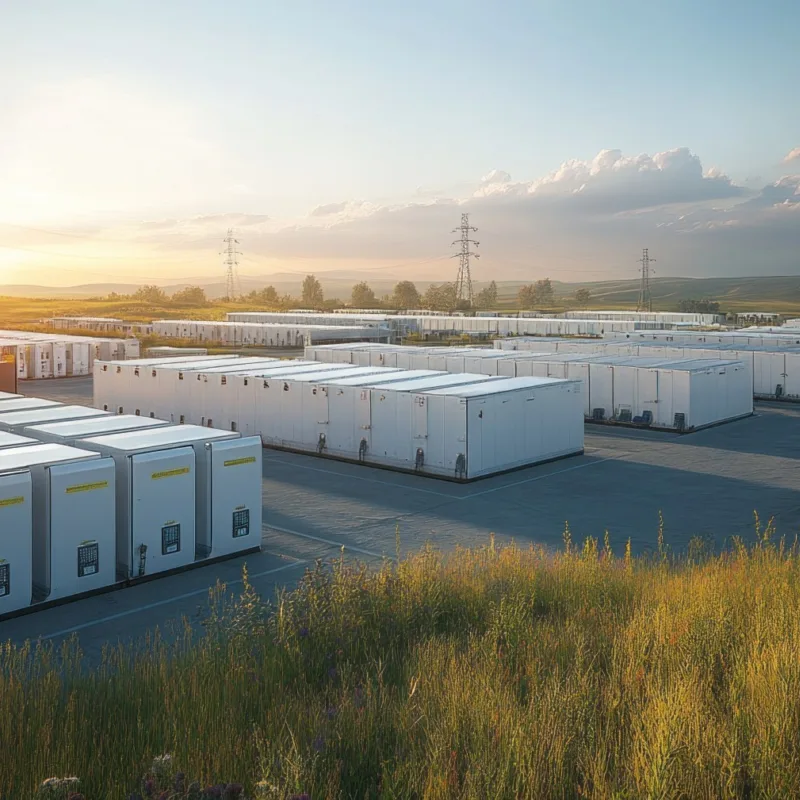3 min read
A rapid rise
This week the Scottish Government’s latest energy statistics (Q2 2025) showed that that battery storage now accounts for almost 24 GW in the country’s renewable pipeline - more than any other single technology. In just a handful of years, large scale batteries have moved from being niche assets at the periphery of public debates about the net zero transition to a defining feature of Scotland’s clean energy future.
Why the surge?
Several forces are driving this acceleration. Net-zero commitments demand a more flexible power system, and in Scotland that flexibility is critical: wind generation often exceeds what the grid can transport to industry and population centres where it’s needed.
Projects like Zenobé’s Blackhillock battery in Moray, already Europe’s largest at 200 MW/2 hours with expansion to 300 MW, are designed to capture that surplus and release it when demand peaks. Costs are falling fast, making large-scale schemes viable, while investors are piling in.
Copenhagen Infrastructure Partners’ £800m commitment to Coalburn and Devilla shows how storage is now viewed as mainstream infrastructure. Regulators, meanwhile, are slowly creating markets where batteries can stack revenues from grid balancing, capacity and wholesale trading.
Opportunities and benefits
The benefits are significant. At grid level, batteries strengthen resilience, reduce congestion, and allow more renewable energy developments to flow. For industry, large-scale schemes can lower costs and hedge against price volatility, while aggregated domestic trials in Scotland have shown how household batteries can provide grid services and cut bills, even helping address fuel poverty.
For policymakers, these projects are a visible marker of net-zero progress and a potential source of economic opportunity as supply chains grow.
Challenges and risks
Yet the risks are real. The project pipeline already exceeds forecast demand, raising the prospect of overcapacity and squeezed returns. Many schemes remain delayed in planning or stuck in grid connection queues. Even high-profile projects such as Coalburn have already seen early financial churn, with a 50% stake sold to AXA.
What’s more, in common with other technologies like wind and solar, communities are also asking questions about land use, safety and environmental impact of large battery storage sites. Many can be developed on brownfield sites to limit visual impact but policymakers will need to update planning frameworks, accelerate reinforcement, and maintain rigorous standards to keep public trust as storage spreads.
Meeting the communication challenge
Battery storage is not only an engineering solution but a communications challenge. Three lessons stand out for organisations shaping the debate:
First, we need to frame batteries as essential infrastructure. They may not be familiar to the public as wind turbine are, but that’s changing. The energy sector and policymakers alike need to talk about storage solutions not an obscure technical fix, but the backbone of a cheaper, cleaner and more secure energy system. Projects like Blackhillock and Coalburn should be presented as national assets, not just private investments.
Second, the sector must confront risks with transparency. Public concerns around safety, land use and supply chains won’t disappear anytime soon. Credible voices need to acknowledge them early, explain mitigation, and show how projects bring tangible local and national benefits.
Third, industry should use flagship projects as symbols of what’s possible in terms of delivery of net zero targets and infrastructure investment. Well-chosen case studies can embody Scotland’s ambition, helping investors, policymakers and the public connect storage to the wider net-zero journey. Making these stories resonate is critical to securing momentum.
Looking ahead
Battery storage is no longer the quiet enabler of the energy system. The figures show it is fast becoming the face of Scotland’s transition. The challenge now is not whether the technology will scale, but how it will be understood, accepted and integrated. The way government, industry and communities communicate about storage will play as decisive a role as the engineering itself.



